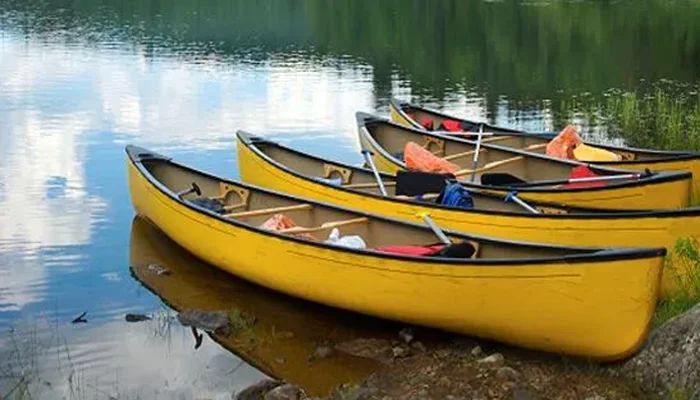Top Ten Things to Take Kayaking
Not sure what to take kayaking? Whether you're paddling down the canal or white water kayaking, we've got a list of the best items to take.
It's all too easy to forget about water safety so we've compiled a top ten list of items to carry in your kayak or open boat canoe when taking to the river.
1. Buoyancy Aid
As a floatation device a buoyancy aid's natural "buoyancy" can actually give you that extra boost to help get you back in the boat.
A buoyancy aid or life jacket is probably the most important item to take with you. The majority of kayakers or open boat canoeists will have quite a lot of swimming experience; however, there are situations where you may not be able to. Here are two examples of instances this might be the case:
a) A lot of paddlers are taught defensive swimming as part of their whitewater training - this involves lying on your back with your feet pointed downstream and using your arms to navigate around debris and other items in the river. In this instance the buoyancy aid will help keep you afloat whilst swimming with the flow.
b) Even in slow moving rivers - should you fall in it can be a real trick to get yourself back in the boat. As a floatation device a buoyancy aid's natural "buoyancy" can actually give you that extra boost to help get you back in the boat. It also helps insulate you against the cold - potentially preventing hypothermia.
2. Headwear
It all depends on the type of river you will be paddling but it makes sense to don a helmet if you're tackling white water.
However, slow moving rivers can also pose other problems - if you're paddling on a sunny day then it makes sense to wear a brimmed hat to prevent sun burn. Equally - if you're paddling in the winter months then you'd be foolish not to wear a beanie or other winter head gear.
3. Footwear
Most paddlers will simply wear old trainers or water shoes when taking to the water, however, in colder weather neoprene boots keep your feet nice and toasty whilst on the water.
Never wear open toed sandals or flip-flops - you never know what's in the river. The likes of glass and rocks have been known to cause injuries to the feet of paddlers.
4. First Aid Kit
You never know what you might have to deal with whilst on the water. Like any water sport kayaking carries a certain amount of risk with it. When packing your first aid kit ensure you put it in a water proof container or dry bag.
5. Dry Bag
A dry bag is pretty important - whether you're just out for a few hours or a whole day. It essentially does what it says on the tin - keeps your personal items dry. It allows you to pack spare clothes, a towel mobile phone, food, sun lotion and first aid kit without the worry that any of your kit will get wet.
6. Food & Clean Water
Risks of dehydration are all too common so it's important to take a bottle of water when taking to the river.
This is common sense really - when going out on the water and having fun it can be all too easy to forget about your body's needs. Risks of dehydration are all too common so it's important to take a bottle of water when taking to the river. It's equally important to take some food - kayaking is a sport and your body needs fuel to keep it going. The last thing you want is to run out of energy halfway to your destination.
7. Throw Bag
A throw bag contains a rope that is used to rescue swimmers by pulling them to safety. In addition it can also be used to tow other (small) boats if necessary.
8. Water Whistle
Most people who undertake water sports - whether rowing, kayaking or dinghy sailing should carry a whistle on the water. If you get in trouble on the water it's not always possible to yell and have someone hear you. A watersports whistle connected to your buoyancy aid is a must.
9. A Knife
There are a number of instances where you might find a knife to be useful. For example, if someone gets thrown from their boat and is caught up in debris or netting then a knife could be used to cut them free.
10. Money
This is another one of those common sense items really. It's important to carry money in a water-tight container (such as your dry bag) as you never know when you might need it.
Whether you've dropped your mobile in the water and need to contact someone urgently or simply need money for a bed and breakfast or hotel for the night - having spare cash is a necessity. For more on how to protect yourself when adventuring the waters, take a look at our insurance offerings for canoes and kayaks here.
About the author
Adam Summersby is a respected leader with 11 years’ varied experience in niche personal and commercial lines insurance, including caravan, site operators and excess reimbursement, with proficiency in leadership, sales and account management.
Date: March 07, 2013
Category: Boat





